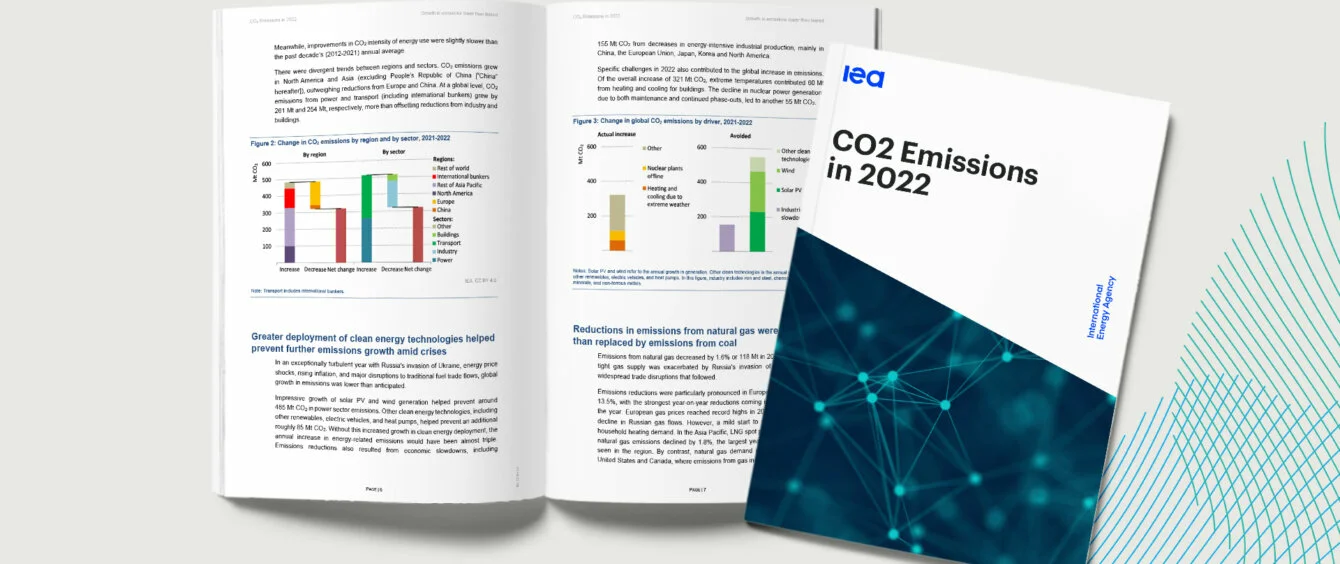The world economy is gradually recovering from the fallout of the coronavirus pandemic, but the global energy crisis triggered by the Russian attack on Ukraine has left its mark. Whereas this presents an opportunity to establish renewable energy as a fixture, it has also affected carbon dioxide emissions from energy production. According to the CO2 Emissions in 2022 report by the International Energy Agency (IEA) they were up 0.9 percent in 2022 – rising much less than in 2021 when the increase amounted to six percent.
When broken down, however, emissions trends were disparate. For instance, the EU actually registered a reduction – of a whopping 2.5 percent. More renewables, less coal consumption than expected, energy savings, and a mild winter were contributing factors.
Moreover, the CO2 increase in 2022 fell short of global GDP growth, which stood at 3.2 percent. This restored the decoupling of emissions from economic expansion. The exception was 2021, when the trend was interrupted by a substantial rise in emissions to the tune of some six percent as the economy recovered following worldwide lockdowns.
According to the IEA, these recent developments are reason to hope that a turnaround to annual emission reductions could be afoot.
Increase not as strong as feared
In view of the ramifications of the Ukraine conflict for energy markets, experts had anticipated a much stronger rise in carbon dioxide emissions. Based on the report, an additional 550 million metric tons were avoided, for example by expanding renewable energy and deploying methods to increase energy efficiency.
Total growth relative to 2021 amounted to 321 million metric tons. Emissions from electricity generation advanced by 423 million metric tons in 2022, while emissions from industrial processes declined by 102 million metric tons. Over a third of the total rise was attributable to heightened demand for cooling and heating (60m mt) and nuclear power plant shutdowns (55m mt).
Less gas, more coal and oil
In addition, the IEA finds that the increase is due in part to a widespread shift from natural gas to coal in reaction to the Ukraine conflict. However, the resulting drop in gas emissions by 118 million metric tons (1.6 percent) was more than offset by a rise in coal firing.
The frontrunner in terms of emissions increases is Asia (excluding China). Substantial economic growth posted by emerging and developing countries led to a rise of 4.2 percent. Strict COVID measures and the ensuing decline in construction kept China’s emissions flat. Owing to extreme weather events, in particular cold spells, emissions were up by 0.8 percent in the USA, driven by massive energy consumption by buildings.
Although the figures give rise to hope, the IEA cautions that the expansion of renewables in particular must make faster progress.
